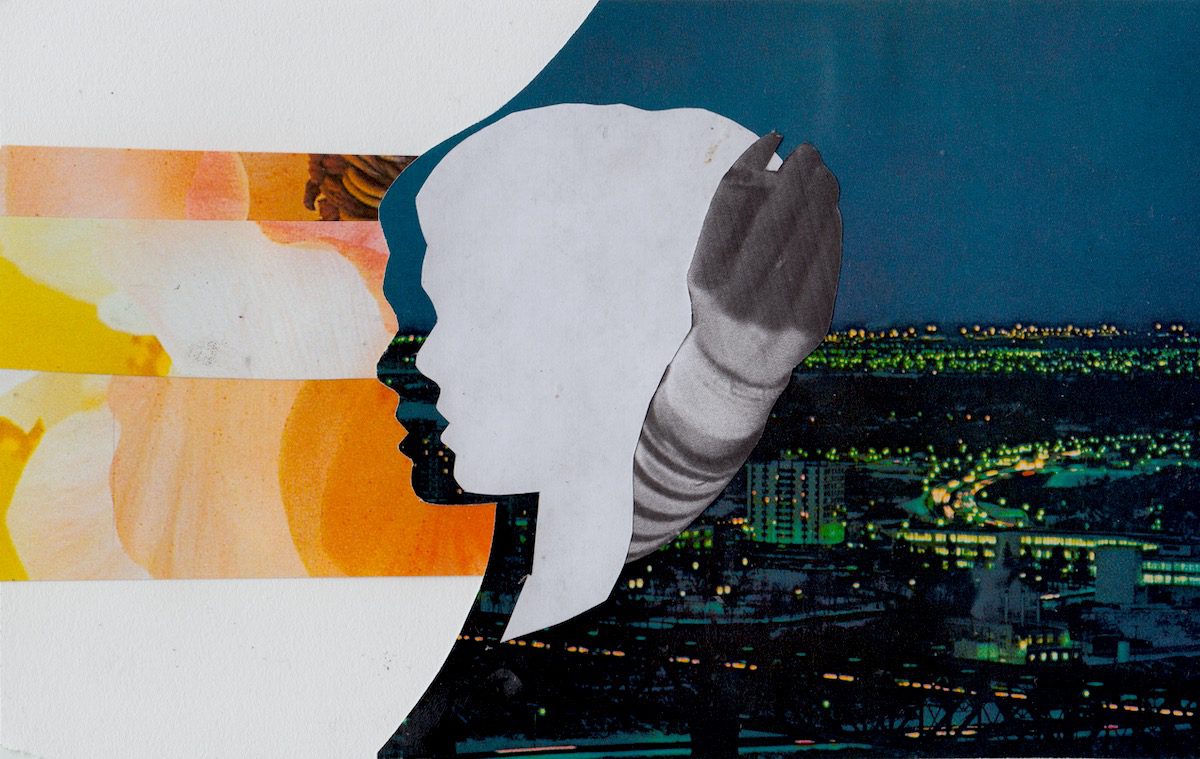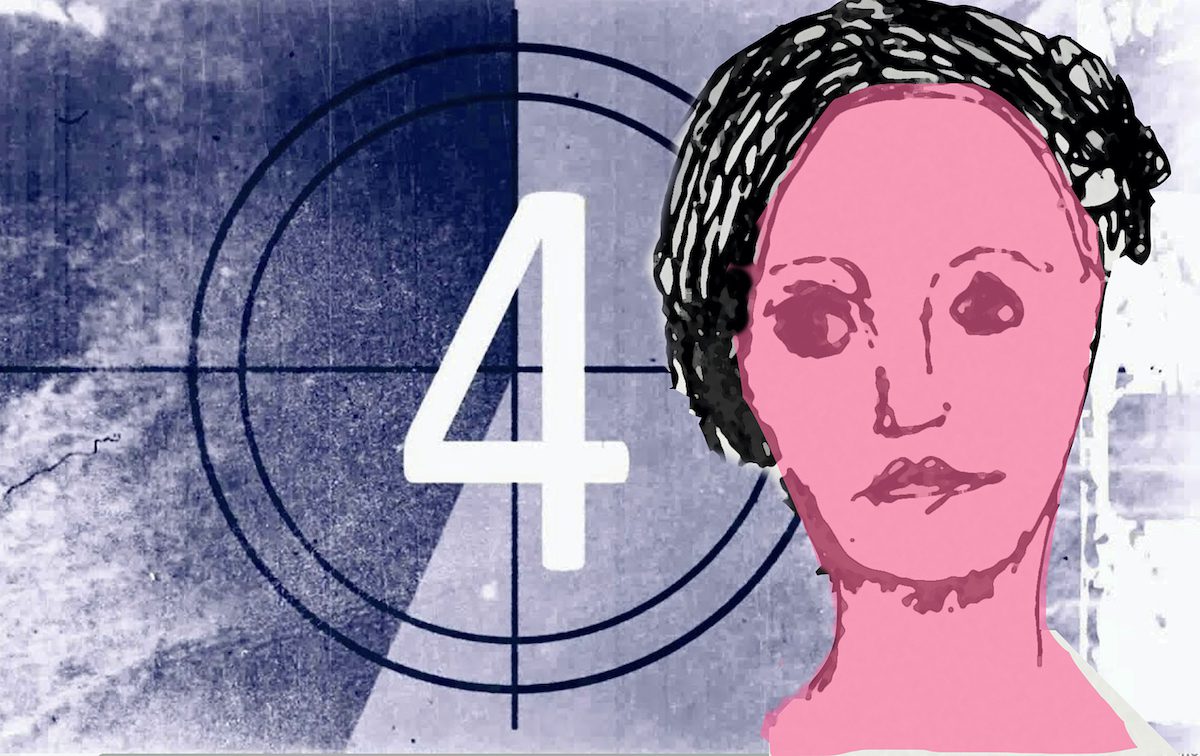
More than forty years after George Romero’s Night of the Living Dead made critics question the future of a culture that could produce such a thing, that future is here – and it is full of zombies.
There are zombie comics, zombie conventions, Rob Zombie Inc., and a Simpsons episode in which Bart informs Lisa that the zombies prefer to be called “living impaired.” There is even a growing movement of participatory fan-fueled performance-art “zombie walks” — BYOB (Bring Your Own Brains!) — where people don elaborately shredded clothing, powder themselves into a pall with makeup, add lots of blood, and spontaneously shamble together in public places.
The movement has been on the lurch since movies like 28 Days Later took zombies mainstream for the first time, and was followed by near-simultaneous appearance of the Dawn of the Dead remake and the homage-comedy Shaun of the Dead. That paved the way for George Romero’s first big studio release, Land of the Dead, a roaring comeback that garnered a standing ovation when his entrail-devouring cannibals finally debuted at Cannes in 2005. The next year, Mel Brooks’ son, Max, went on tour with his book, World War Z: An Oral History of the Zombie War, a “Studs Terkel approach” to zombie conflict that is headed for the cineplex. Then came the literary mash-up, Pride and Prejudice and Zombies. And don’t forget the endless video games: Resident Evil’s many versions (and their movie spin offs), Dead Rising (which was reviewed with by me for the LA Weekly with such incredible insight that the text has been partly cannibalized (Get it?) for this little item), and Left 4 Dead, with its new, improved and unpredictable zombies. Topping it all off, the comedy horror flick Zombieland closed out the summer with a surprise $68m (to date), the highest box office for a Zombie movie yet, prompting more re-heated trend stories about how zombies finally, really, extra-for-certain have hit the cultural big time.
I guess they missed Will Smith’s I Am Legend, which came out in December 2007 (just in time for the holidays!), which was based on Richard Matheson’s 1954 novel, the proto-zombie anxiety tale of a sole survivor facing an infectious pandemic while barricaded in his home in Los Angeles and made $256 million – but, really, who’s counting? (Will Smith’s version was relocated to New York for effective apocalyptic atmospherics, which was then effectively undermined by the zombies, who looked like retarded motion-filtered, clip art monsters when they finally showed up.)
But since we’re talking origins, let’s peel it way back, to the first hints of human civilization: in the irrigated marshes of the fertile crescent, the Sumerians charted the heavens, erected stepped pyramids, and pressed their styluses into clay to record the Epic of Gilgamesh, a collection of myths that includes Ishtar threatening to knock down the Gates of the Netherworld and “let the dead go up to eat the living!” Every culture since has registered the same basic fear, from medieval Europe’s revenants to Haiti’s trodotoxinated zonbi, from which the word zombie originated.
And that brings us to Mischa Berlinski’s real-life trip to the real zombie underworld.
Yes, the best Zombie-related story in recent memory is not a comic, gore game, publishing coup, or blockbuster – it is an article in Men’s Journal. I often forget that Men’s Journal, like its Wenner Media companion, Rolling Stone (where I have written), is oneof the few publishing places where the glossy cover and glossier ads support solid, long form, narrative writing. And so when I picked up a copy at a friends house and leafed passed “Boys and their Toys” (or whatever was on the cover), I was glad to discover an epic, 8,000-word expose that promised “Voodoo, Sorcerers and Lost Souls.”
The piece is a detailed look at the elaborate system of secret societies, ritual magic, and pharmacologically-induced human trafficking that is the Haitian zombie culture. It is incredible. Even if you are familiar with Wade Davis, or have read The Serpent and the Rainbow, or seen the mediocre movie, Berlinski’s story is still incredible. Unlike Davis, who was doing research in his field, Berlinski just wound up in the Haitian countryside, started hearing about zombies, and looked into it. He had no thesis, or grantors to satisfy. He just decided to get to the bottom of something that sounded impossible. His story opens:
I moved to Haiti in the spring of 2007, when my wife found a job with the United Nations’ peacekeeping mission there… She was assigned to Jérémie, a small town on Haiti’s southwest coast….About a month after I arrived in Jérémie, a rumor swept through town that a deadly zombie was on the loose. This zombie, it was said, could kill by touch alone. The story had enough authority that schools closed. The head of the local secret society responsible for the management of the zombie population was asked to investigate. Later that week, Monsieur Roswald Val, having conducted a presumably thorough inquiry, made an announcement on Radio Lambi: There was nothing to fear; all his zombies were accounted for.
Hooked! The rest of the lede turns the reel even more:
I was eager to meet a zombie for myself, and began making appropriate inquiries. Several weeks later, my wife came home from a judicial conference. Making small talk, a local judicial official mentioned the strange case of zombification that his courtroom had seen not several months before. The case was, he said, “un peu spectaculaire.”
I met Judge Isaac Etienne a week or so later at his unfinished concrete house in the village of Roseaux…The judge was a boyish-looking man of 42, slender, wearing baggy surfer shorts, flip-flops, and a brightly colored Hawaiian shirt.
The dossier was, at bottom, a murder story, the judge said — but it was a murder story with the great oddity that the victim did not die.
With so much space, Berlinski gets a chance to include a succinct primer on how one comes is (putatively) zombified in Haiti, which I’ll make more succinct like so: poison; paralysis with full consciousness; live burial; psychological trauma of such burial; retrieval by sorcerer; application of hallucinogen drugs by sorcerer to perpetuate mindless state. Add to that the cultural context: Haitians believe in zombies, and so they are psychically susceptible to the conditioning. They think they’ve died and will be rejected by the living who have seen them be buried. And then they are so rejected. And this is how, Wade Davis argues, real people become zombie slaves to “sorcerers.”
If that’s hard to swallow, then how about the sorcerers’ system of secret societies that governs much of Haiti beneath the thin veneer of governmental institutions. Berlinski details the byzantine world of zombie administration, which sounds like an episode of Trueblood, with regional hierarchies of Chief Sorcerers and Departmental Chiefs and Presidents and Emperors and Queens and their sorcerer secretaries. Not to mention the zombie passports — documents that allow one to create, hold, or move your zombie from region to region. (Yes, such things exist; there are pictures.) Berlinski follows Madame Zicot, a woman trying to track down her zombified daughter, Nadathe, by navigating her way through the secret societies. (And yes, they do accessorize with candle-topped skulls and convene at midnight.) It is gripping as an occult procedural, and heartbreaking as a story of real tragedy. Eventually, Berlinski notes that if you take away the spooky magic, the zombie world is an institutionalized form of human trafficking, which prompts him into a well-intentioned form of gonzo journalism:
I am not wealthy by American standards, but this article will probably pay me more than Madame Zicot could hope to earn in a decade. I wondered whether this money would not be sufficient to buy Nadathe’s freedom, if she were still alive. Strip the story of its exoticism — replace the word “zombified” with “poisoned, kidnapped, drugged, and enslaved” — and you have a brutal crime. To profit from her enslavement, not having done all I could to liberate her, seemed to me to cross that narrow frontier that separates curiosity from exploitation.
Berlinski, it is nifty to note, is allowed to make his case among the secret societies only because of Obama’s magic; the international goodwill created by his election makes them open to entreaties from an American. As he gets drawn deeper in himself, Berlinski pauses to wonder if the zombie culture isn’t some kind of mass delusion, a false institution that is really just another layer of politics, an intricate system that allows people to exploit one another. The societies may be that too, but Berlinski thinks they’re not fooling:
You either believe in zombies, or you don’t.
For my part, I believe that a young woman named Nadathe Joassaint was poisoned, buried alive, stolen from her grave, drugged, transported, and enslaved. I believe that she is alive to this day and in the possession of a man I know only as Monsieur 17, in a region of the Grand’ Anse I feel better not naming in print.
There’s a reason for that candid (and journalistically refreshing) statement, but to explain why would reveal the kicker. I won’t spoil that, other than to say that there is a not-so-surprising surprise ending that is well worth reading the whole article to experience.




